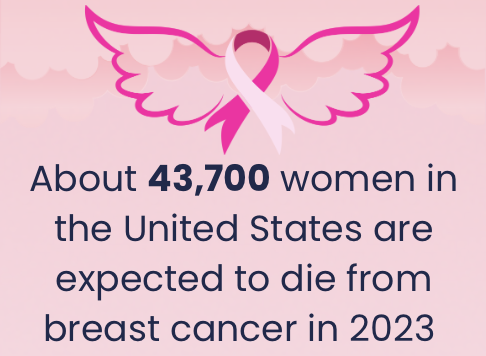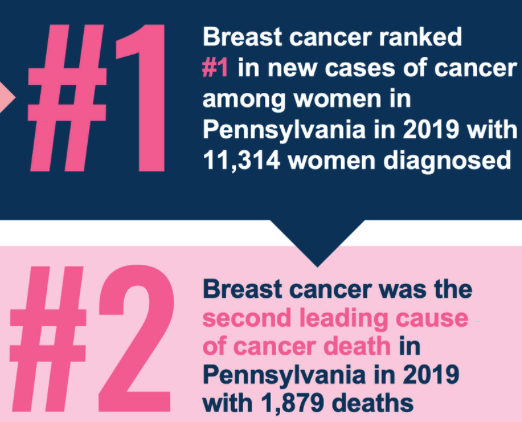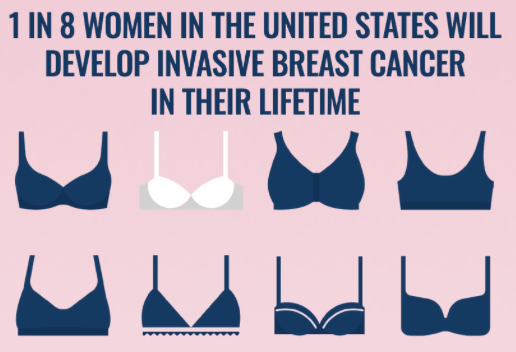Breast Cancer Awareness Education
At Spectrum Health Services, we are dedicated to your well-being, and we believe in the power of awareness and education when it comes to breast cancer. Join us this Breast Cancer Awareness Month in spreading knowledge, hope, and support for women’s health and wellness.
Why Breast Cancer Awareness is Important
Early Detection Saves Lives: Regular breast cancer screenings can detect abnormalities at an early stage when treatment is most effective. We're here to provide the resources, information, and care you need to navigate your health journey with confidence. By promoting awareness, we strengthen our community and support those affected by breast cancer.
Our Mission to Ensure Your Well-Being
Spectrum's mission is healing the whole woman and inspiring you to schedule your wellness exams. Regular check-ups are key to maintaining your health. Make an appointment today! Knowledge is your best defense. Learn about breast health, risk factors, and self-exams. Encourage your friends and family to prioritize their health and well-being too.
10 MYTH'S ON
BREAST CANCER
MYTH #1 - If I don’t have a family history of breast cancer, I won't get it.
Many people think of breast cancer as an inherited disease. But only about 5–10% of breast cancers are believed to be hereditary, meaning they’re caused by abnormal changes (or mutations) in certain genes passed from parent to child
This information is provided by Breastcancer.org.
Donate to support free resources and programming for people affected by breast cancer.
MYTH #2 - If I maintain a healthy weight, exercise regularly, eat healthy and limit alcohol I won't have to worry about breast cancer.
FACT: Although these behaviors can help lower breast cancer risk, they can’t eliminate it. It’s something we hear again and again from newly diagnosed women: “I eat healthy, I’m at a healthy weight, I’m active, and I barely drink. So how did I end up with breast cancer?” Yes, there is evidence that all of these behaviors can help lower your risk. However, they can’t guarantee you’ll never get the disease. There are so many examples of people who do everything right and still get breast cancer.
This information is provided by Breastcancer.org.
Donate to support free resources and programming for people affected by breast cancer.
MYTH #3 - Wearing a bra can cause breast cancer.
FACT: There is no evidence that bras cause breast cancer. From time to time, media coverage and the internet have fueled myths that wearing a bra can increase breast cancer risk. The theory was that wearing a bra — especially an underwire style — could restrict the flow of lymph fluid out of the breast, causing toxic substances to build up in the tissue.
This information is provided by Breastcancer.org.
Donate to support free resources and programming for people affected by breast cancer.
MYTH #4 - Using underarm antiperspirant can cause breast cancer.
FACT: There is no evidence of a connection between underarm antiperspirant and breast cancer, but the safety of antiperspirants is still being studied. There have been persistent rumors that underarm antiperspirants, especially those containing aluminum and other chemicals, are absorbed into the lymph nodes and make their way into breast cells, increasing cancer risk.
This information is provided by Breastcancer.org.
Donate to support free resources and programming for people affected by breast cancer.
MYTH #5 - Carrying my cell phone in my bra can cause breast cancer.
FACT: There is no evidence of a connection between cell phones and breast cancer, but the safety of cell phones is still being studied. Media reports have raised concerns that carrying a cell phone in your bra might increase breast cancer risk.(This is low-energy radiation, unlike the high-energy radiation used by X-rays, for example.) This research hasn’t found a link, but the issue is still being studied.
This information is provided by Breastcancer.org.
Donate to support free resources and programming for people affected by breast cancer.
MYTH #6 - Breast cancer always causes a lump I can feel.
FACT: Although mammography is the best early-detection tool we have, it doesn’t always find breast cancer at an early stage. It’s certainly normal to breathe a sigh of relief any time your mammogram comes back clean. Most women think, “I’m good for another year” and put breast cancer out of their minds. Although mammography is a very good screening tool, it isn’t foolproof. It can return a false-negative result, meaning that the images look normal even though cancer is present. It’s estimated that mammograms miss about 20% of breast cancers at the time of screening.
This information is provided by Breastcancer.org.
Donate to support free resources and programming for people affected by breast cancer.
MYTH #7 - Breast cancer always causes a lump I can feel.
FACT: Breast cancer might not cause a lump, especially when it first develops. People are sometimes under the impression that breast cancer always causes a lump that can be felt during a self-exam. They might use this as a reason to skip mammograms, thinking they’ll be able to feel any change that might indicate a problem. However, breast cancer doesn’t always cause a lump. By the time it does, the cancer might have already moved beyond the breast into the lymph nodes. Although performing breast self-exams is certainly a good idea, it isn’t a substitute for regular screening with mammography.
This information is provided by Breastcancer.org.
Donate to support free resources and programming for people affected by breast cancer.
MYTH #8 - Breast caner only happens to middle aged and older women
FACT: Younger women can and do get breast cancer, as do men. It is true that being female and growing older are the main risk factors for developing breast cancer. In 2017, about 4% of invasive breast cancers were diagnosed in women under age 40, while about 23% were diagnosed in women in their 50s and 27% in women ages 60 to 69. 6 While 4% might sound small, it isn’t zero: This percentage means that one in every 25 invasive breast cancer cases occurred in women under 40.
This information is provided by Breastcancer.org.
Donate to support free resources and programming for people affected by breast cancer.
MYTH #9 - Breast cancer only appears In people assigned female at birth.
Although breast cancer is much more common in women, men can develop breast cancer. In the United States, less than 1% of all breast cancers occur in men.
This information is provided by Breastcancer.org.
Donate to support free resources and programming for people affected by breast cancer.
MYTH #10 - When treatment is over , I am finished with breast cancer.
FACT: Breast cancer can have a long-term impact on people’s lives and well-being. People with breast cancer often report that their family and friends expect them to be ready to move on after treatments such as surgery, radiation therapy, and chemotherapy end. In reality, targeted therapies such as Herceptin (chemical name: trastuzumab) may be prescribed for a year or more.
This information is provided by Breastcancer.org.
Donate to support free resources and programming for people affected by breast cancer.
The following are risk factors for Breast Cancer:
- Older Age
- A personal history of Breast Cancer or benign ( Non-cancer) breast disease
- Inherited risk of Breast Cancer
- Dense breast tissue
- Taking hormone therapy for symptoms of menopause
- Radiation therapy to the breast or chest
- Obesity
- Drinking alcohol
The following are protective factors for Breast Cancer:
- Taking selective estrogen receptor modulators or aromatase inhibitors and inactivators
- Risk-reducing or prophylactic mastectomy
- Ovarian ablation
- Getting enough exercise
Changes that should raise concern and be reported include:
Hover to see Descriptions
INVASIVE VS. NON-INVASIVE BREAST CANCER
When breast cancer is called invasive (or infiltrating), it means it has spread into the surrounding breast tissue.Some types of invasive breast cancer have features that affect how they develop and how they are treated:
Triple- negative Breast Cancer
About 12% of all invasive breast cancers are triple-negative.
Inflammatory Breast Cancer
Is a rare and aggressive type of invasive breast cancer. About 1% of all breast cancers in the United States are inflammatory breast cancer.
Metastatic breast cancer, also called stage IV breast cancer
Breast cancer can come back in another part of the body months or years after the original treatment (called a metastatic recurrence), but some people are initially diagnosed with metastatic disease (called de novo metastatic breast cancer).
Recurrent breast cancer
Is invasive breast cancer that has come back months or years after treatment.
Male Breast Cancer
Most male breast cancers are invasive ductal carcinomas.
Paget Disease
Of the breast is a rare form of breast cancer where cancer cells collect in or around the nipple.
This information is provided by Breastcancer.org. Donate to support free resources and programming for people affected by breast cancer.





